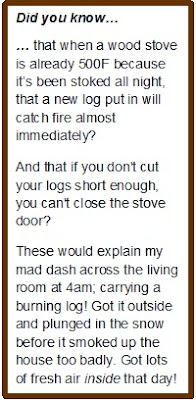 The house is uncharacteristically quiet. The big road behind us is calm. The neighborhood is still asleep. Even the dogs are still dozing. This hour beckons me. I even think about it before I go to bed at night. Relishing the personal time. Connecting-with-God time. Pondering. Journaling. Praying. Refueling. I put on the coffee, foam up some milk, pour the dark brew in my favorite stoneware mug, then settle in to my comfy chair near a window and by the fireplace... Are you feeling it?
The house is uncharacteristically quiet. The big road behind us is calm. The neighborhood is still asleep. Even the dogs are still dozing. This hour beckons me. I even think about it before I go to bed at night. Relishing the personal time. Connecting-with-God time. Pondering. Journaling. Praying. Refueling. I put on the coffee, foam up some milk, pour the dark brew in my favorite stoneware mug, then settle in to my comfy chair near a window and by the fireplace... Are you feeling it?This day, in my slow wanderings with Jesus through the second Gospel, I arrive at Mark 6:30. Jesus and the disciples have had an intense period of ministry. They are ready for some time away from the crowds and demands. They climb into a boat, and sneak off to a secluded cove. Begining to unwind, as they consider the time ahead. They're really looking forward to some quiet, R&R. Alone. Right?
But the hoards are so zealous to be near Jesus, they run along the shore, taking shortcuts over hills and creeks, and are waiting at this "secret" place when the guys arrive. Can you imagine the frustration? The sense of let-down and disappointment?
 By now it's 6:30am, and the Colorado sun is coming up. Suddenly, The Kid's bedroom door bursts opens, and out pops our nine year old; all spunk and smiles. (I love that she most often wakes up in this way. But prefer that it be- I don't know- AN HOUR LATER?!) She comes bouncing across the living room to me, and asks if I want her to make us some oatmeal. I force a smile, and tell her that would be delightful. She skips to the kitchen. Pots and pans crash. The pantry door slams. She soon announces, "I'm going to need your help reading the instructions!" Not satisfied with instant- and the simplicity of the hot water dispenser- she wants to make it from scratch on the stove; like Grammy does. There goes my magic hour.
By now it's 6:30am, and the Colorado sun is coming up. Suddenly, The Kid's bedroom door bursts opens, and out pops our nine year old; all spunk and smiles. (I love that she most often wakes up in this way. But prefer that it be- I don't know- AN HOUR LATER?!) She comes bouncing across the living room to me, and asks if I want her to make us some oatmeal. I force a smile, and tell her that would be delightful. She skips to the kitchen. Pots and pans crash. The pantry door slams. She soon announces, "I'm going to need your help reading the instructions!" Not satisfied with instant- and the simplicity of the hot water dispenser- she wants to make it from scratch on the stove; like Grammy does. There goes my magic hour.Thinly masking my impatience, I get her started, then try to get back into The Word; totally relating to the situation in which our Hero finds Himself. If you know the story, you're already smiling. Jesus' response to the major interruption of solitude for His weary group, is not irritation or rejection. Instead He feels compassion. Compassion! He goes on to teach the crowd what they long and need to hear. Then later (6:30pm?) feeds all 5000 of them a delightful dinner of fish and bread. But to me- in my current state- the real miracle that day was His compassion in the face of personal loss.
 I humbly admit that this was not my initial response at having my personal retreat hour revoked. But always seeking to follow His example, I put down my books and pen, and joined The Kid for breakfast. Telling her all she longs and needs to hear: That she is a treasure, and worth every bit of my attention and affection. (Isn't that what Jesus told His flock that day?) There will be more quiet mornings alone. But not many with this God-given blessing.
I humbly admit that this was not my initial response at having my personal retreat hour revoked. But always seeking to follow His example, I put down my books and pen, and joined The Kid for breakfast. Telling her all she longs and needs to hear: That she is a treasure, and worth every bit of my attention and affection. (Isn't that what Jesus told His flock that day?) There will be more quiet mornings alone. But not many with this God-given blessing.










